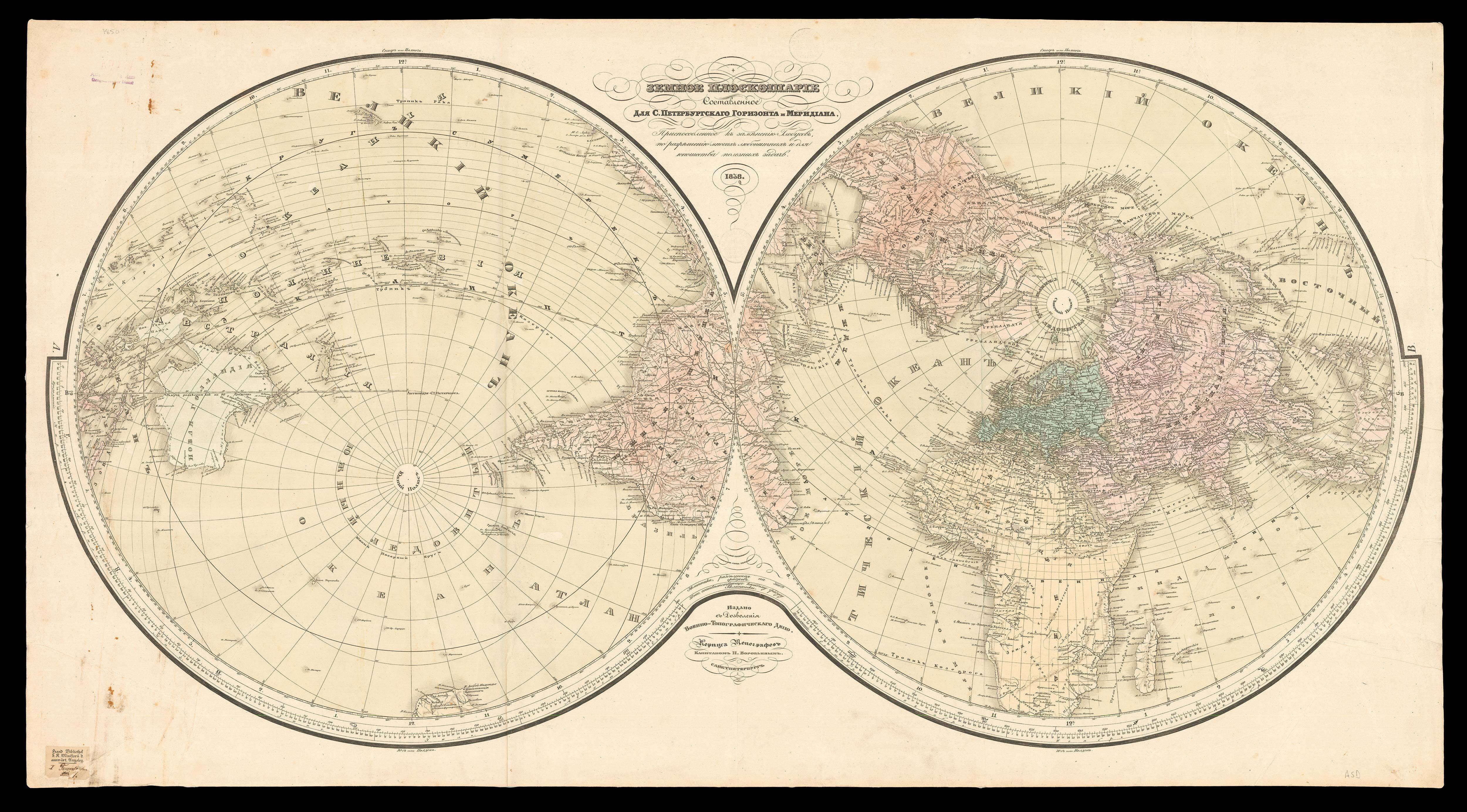





Künstliche ERDKUGEL zur Verbreitung gemein nütziger Kentnisse über die Eintheilung u: Gestalt der Länder u: Meere unsers Wohnplatzes.
- Author: BAUER, Carl Johann Sigmund
- Publication place: Nuremberg
- Publication date: 1825.
- Physical description: Terrestrial folding globe comprising six ungraduated engraved gores with contemporary outline colouring, each mounted on contemporary card with cords to gore ends, contained in contemporary envelope style card folder with publisher's label to upper board, inside covers with engaved terrestrial and celestial diagrams, each with faint contemporary hand colouring, the central panel with fifteen lithographic costume plates, each with contemporary hand colouring showing the world's inhabitants and displayed as a concertina folding strip.
- Inventory reference: 2148
Notes
The present work would appear to be an early example of Carl Johann’s globes designed for the educational market. The globe itself is housed within paper covers, which contain information on the inside including the orbit of the earth, the cardinal points, the frigid, temperate, and torrid zones, the equinox, and the seasons. Pasted to the central panel is a concertina of 15 lithographs depicting indigenous people, from the Englishman to the Freundschaftsinsulaner (Friendly Islander, Tonga). The globe is backed upon blue card, with the original string attached to the north and south poles. The title gives prominence to the latest discoveries of William Parry, whose exploration of the Northwest Passage between 1819-1825 had been followed by cartographers with keen interest.
The format would appear to have proved popular, as the Bauer firm would continue to produce a miniature globe together with depictions of indigenous people well into the mid-nineteenth century. A version was published for the English market titled ‘The earth and Its Inhabitants’.
Johann Bernard Bauer (1752-1839) and his sons Carl Johann Sigmund (1780-1857) and Peter Bauer (1783-1847) were scientific instrument and globe makers working in Nuremberg. Johann is recorded as the engraver of a celestial globe by Georg Klinger in 1790; he also published some late editions of the Doppelmayr globes. his sons are best known for their miniature globes published for the educational market.
We are only able to trace three institutional examples: the Houghton Library at Harvard university; the Library of Australia; and the Danish national Library.
Bibliography
- length 1560mm, retaining original linen ties, folded size 200 x 120mm.
each gore 170mm in length,
 Rare Maps
Rare Maps  Rare Atlases
Rare Atlases  Rare Books
Rare Books  Rare Prints
Rare Prints  Globes and Planetaria
Globes and Planetaria 










